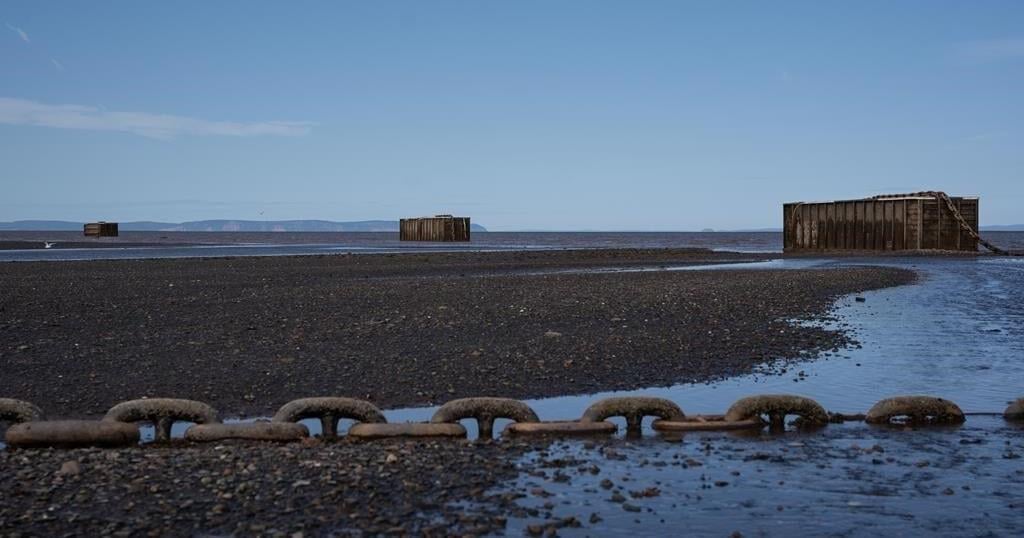HALIFAX – Transport Canada has ordered a bankrupt tidal power company and a bankruptcy trustee to produce a plan to remove four huge moorings abandoned in the water near Walton, N.S.
The four moorings are made of concrete-filled railcars connected to giant chains, and were to be used for a tidal project by Occurrent Power but were left in the staging area after the company declared bankruptcy Aug. 29.
Transport Canada’s order issued Sept. 10 also asks the company and the trustee to install buoys to mark the location of the four boxcars located near the community along the Bay of Fundy, about 88 kilometres north of Halifax.
In an email to The Canadian Press, Transport Canada says it has formally determined the train cars pose a navigational hazard to boaters. When the tides rise in the channel, the four containers are just metres beneath the surface.
Occurrent Power’s executives have not responded to several requests for comment.
Paul Pettigrew, vice-president with bankruptcy trustee MNP Ltd., said in a telephone interview the trustee has received the Transport Canada notice and “does not have an interest in the railcars and has been in discussions with both Transport Canada and the provincial Department of Natural Resources.”
He says it’s expected that the government agency that relocates the railcars will determine the final cost of their removal and then would become a creditor in the bankruptcy proceedings in an effort to recover those costs.
A statement sent to creditors says the firm has $35.7 million in liabilities and almost $14 million in assets.
The Department of Natural Resources has said the company’s $20,000 deposit for the project is available to help pay to remove the railcars, which are on provincially owned land.
In an interview Wednesday at the legislature, Natural Resources Minister Tory Rushton said the province is still “evaluating the price of what it is going to take to get them (the containers) out of the water.”
“We’ve committed to making sure they do come out of the water …. We want to see these off the ground and Crown land returned to what it was.”
Rushton said, “it’s a good step forward” for Transport Canada to order the buoys be put in place, adding that it’s not the long-term solution.
This report by The Canadian Press was first published Sept. 18, 2024.
— With files from Keith Doucette in Halifax.

























